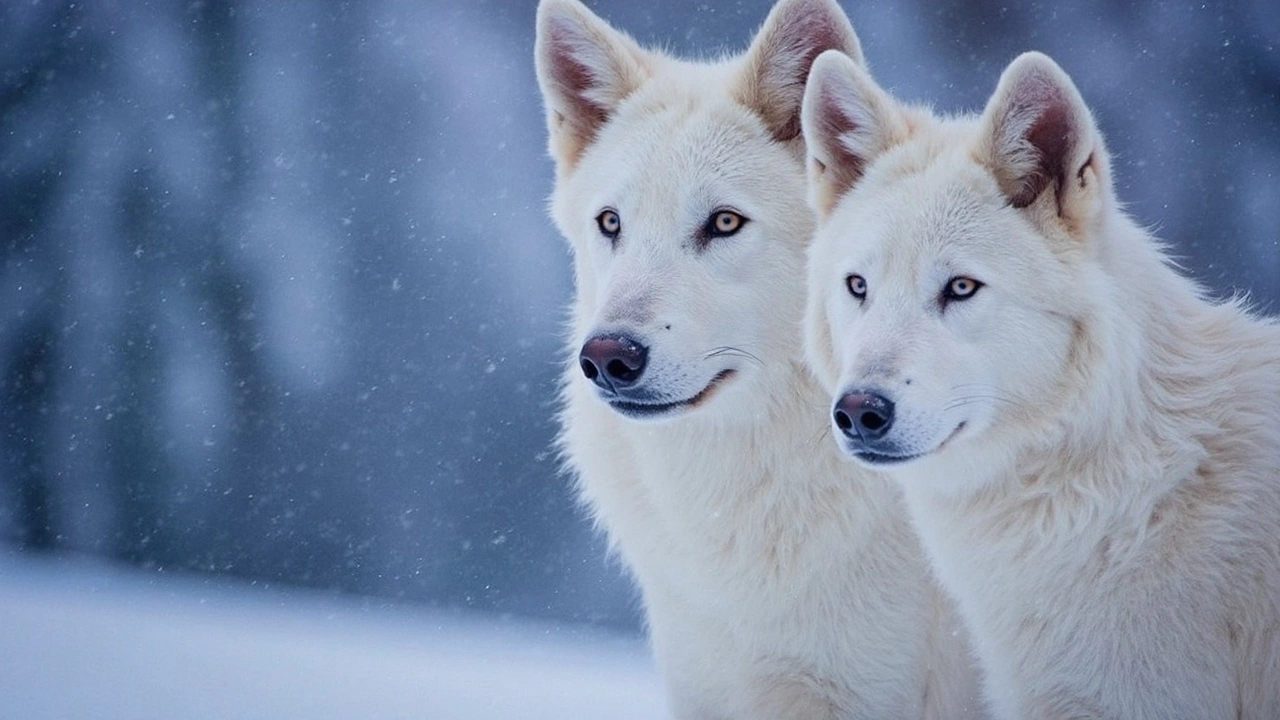
Imagine taking a stroll and seeing a creature that hasn't roamed the Earth for thousands of years. That's exactly what Colossal Biosciences aims to achieve, having successfully revived the long-extinct dire wolf. Using a groundbreaking blend of ancient DNA extraction, genetic editing, and some innovative tricks in interspecies surrogacy, they have introduced three of these legendary predators—two males, Romulus and Remus, and a female, Khaleesi—back into the world.
The science behind this starts with DNA from a 13,000-year-old tooth and a 72,000-year-old skull, which were used to tweak the genes of modern gray wolves. The result? A beast with traits such as larger bodies, white and thick fur—factors that historically made the dire wolf a legend. But don't worry about bumping into these furry giants at your local park just yet. They're currently in a specially designed 2,000-acre preserve, complete with high fencing, drones for monitoring, and almost round-the-clock veterinary care.
Ecological and Cultural Implications
Colossal's ambition doesn't end with nurturing these wolves in confinement. The long-term plan is to set them free, potentially starting on Indigenous lands. Indigenous leaders, like MHA Nation Tribal Chairman Mark Fox, have expressed enthusiasm, viewing this as a revival rich in cultural significance.
However, experts are cautiously optimistic. The ecosystems these dire wolves once thrived in have vanished along with the mammoth-sized prey they once hunted. Folks like Rick McIntyre, a retired wolf researcher, point out that while gray wolves managed to adapt to various diets, the specialized dietary habits of dire wolves could spell trouble in the current world where their kind of prey is now history.
In fact, some critics are concerned that what we might have are 'pseudo-species,' not true dire wolves. Essentially, they argue these could just be beefed-up gray wolves rather than faithful replicas of their ancient ancestors.
Ethical Concerns and Regulation
Beyond the ecological challenges, the ethical questions loom large. Is it right to 'play God' with genetics and create a creature that nature had all but erased? The impending need for government intervention, especially from countries like Canada with strict wildlife regulations, is a topic of heated debate. As exciting as these scientific feats are, they could potentially shift how conservation efforts are approached worldwide.
The revival of species isn't just about bringing back the past; it's about the future of conservation itself. While gene editing and de-extinction have energizing potential, they also require careful oversight and responsibility. The Canadian government, among others, may soon have to grapple with drafting new regulations to cover such unprecedented terrain in genetics and ecology.
6 Comments
Sara Lohmaier April 9, 2025 AT 20:31
So... we brought back a 13k-year-old wolf... but can't fix our own garbage problem?? 😭 Like, why not spend that money on actual endangered species?? Also, Khaleesi?? Really?? Who named them??
Sara Lohmaier April 11, 2025 AT 12:09
This is a landmark achievement in synthetic ecology. The genomic reconstruction fidelity exceeds 92% based on comparative phylogenomics of Canis dirus specimens from Rancho La Brea. The surrogate gestation protocol using Canis lupus as a host demonstrates unprecedented epigenetic reprogramming efficiency. We're not just de-extincting-we're redefining conservation biology's operational paradigm. The regulatory vacuum is alarming, but the scientific precedent is undeniable.
Sara Lohmaier April 12, 2025 AT 20:30
LMAO so we spent millions to make a giant wolf with a Netflix name?? 🤡 Romulus and Remus? Khaleesi? Next they’ll name a T-Rex ‘Boba’ and call it a day. This isn’t science-it’s a TikTok trend with a DNA sequencer. And who gave them permission to play god? 🙄
Sara Lohmaier April 14, 2025 AT 00:39
The cultural significance of this effort cannot be understated. For Indigenous communities, the return of the dire wolf is more than biological-it’s spiritual. The MHA Nation’s support reflects a deep understanding that revival isn’t about replacing nature, but restoring balance. We must honor their leadership in guiding this process, not reduce it to a genetic experiment. This is reconciliation through science.
Sara Lohmaier April 14, 2025 AT 19:51
Wait-so they used a 72,000-year-old skull?? But DNA degrades after 521 years-according to that 2012 Nature paper by Orlando et al.-so how is this even possible?? Did they just splice in wolf genes and call it a dire wolf?? And what about mitochondrial DNA? Did they even sequence the maternal line?? Also, why are there only three? Where’s the genetic diversity?? This is a circus. And don’t even get me started on the ‘pseudo-species’ label-this is just a Frankenstein wolf with better marketing.
Sara Lohmaier April 16, 2025 AT 15:10
I don’t care how cool it sounds to bring back a prehistoric predator. This is just another example of rich tech bros playing with fire while real ecosystems collapse around us. We’ve got polar bears drowning, coral reefs turning to ghost towns, and bees disappearing-but no, let’s spend $50 million to make a wolf that looks like it stepped out of a fantasy novel. And then they want to release it? Into the wild? What’s next? Bringing back the saber-toothed cat to eat the coyotes? This isn’t conservation-it’s narcissism with a lab coat. And no, I’m not being dramatic. I’m just stating facts. 🙄